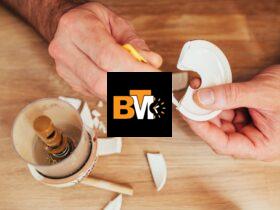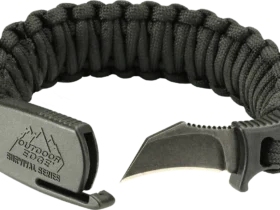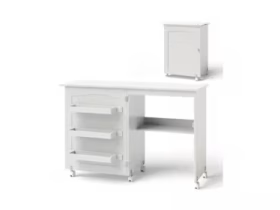Basics of Die Casting
Die casting is a precise manufacturing process that involves injecting molten metal into a mold under high pressure. It allows the creation of detailed and durable metal parts used in various industries.
Defining Die Casting
In die casting, molten metal is injected into a steel mold to form metal parts. This is done under high pressure, ensuring that the material fills every part of the mold. Once the metal cools, the cast is removed, revealing the finished piece.
The die casting process is praised for its efficiency. It produces parts with great accuracy and smooth finishes. This makes it ideal for creating complex shapes with tight tolerances, minimizing the need for extra work afterwards.
Historical Development
Die casting has a rich history dating back to the 19th century. It was first used in printing to create movable type in the 1800s. The invention of the die casting machine in the early 1900s expanded its use significantly, making it pivotal in industries like automotive manufacturing.
As technologies advanced, die casting has evolved, becoming faster and more efficient. Innovations in materials and equipment have enhanced the quality of the casting process over time. Thanks to these developments, die casting continues to be a crucial part of modern manufacturing.
Comparison with Other Metal Casting Processes
Metal casting includes several methods, but die casting is particularly known for speed and precision. Unlike sand casting, which uses a sand mold and takes longer to produce each part, die casting allows for rapid production cycles.
Investment casting provides excellent detail but involves a more time-consuming process compared to die casting. While die casting is best for large production runs of components with consistent quality, other methods might be chosen when specific details or materials are needed.
When you compare the processes, die casting stands out for producing detailed and consistent parts quickly. It remains a preferred choice for high-volume production, especially when precision is key.
Materials and Properties in Die Casting
In die casting, materials have unique qualities that make them suitable for specific applications. Common alloys used include aluminum, magnesium, and zinc. These materials offer distinct benefits like corrosion resistance and conductivity, influencing their selection for different uses.
Common Die Casting Alloys
Several alloys dominate the die casting industry. Aluminum alloys are widely used due to their lightweight nature and excellent strength-to-weight ratio. They also offer superb corrosion resistance, making them ideal for automotive and aerospace applications.
Magnesium alloys, though less dense than aluminum, are appreciated for their outstanding machinability and lightweight properties, leading to applications in electronics and automotive parts. Zinc alloys are chosen for their excellent fluidity, making them perfect for intricate shapes while providing good mechanical properties.
Copper and tin alloys are also used, though less commonly. Copper offers high thermal and electrical conductivity. Tin, while not a primary die-cast material, is used sparingly for its unique properties in certain applications.
Material Characteristics
Each die casting material presents unique characteristics. Aluminum is known for its corrosion resistance and good thermal conductivity. This combination makes it suitable for components that must withstand harsh environments.
Magnesium offers exceptional strength and damping capacity, though it is more reactive than aluminum. It’s also one of the lightest structural metals available.
Zinc provides impressive mechanical properties and corrosion resistance. It dissipates heat efficiently, which is important in electrical applications. Copper alloys, with their high conductivity, ensure efficient heat distribution, while their corrosion resistance adds longevity.
Selecting the Right Material
Choosing the appropriate material depends on several factors. You must consider the mechanical properties needed for the application, such as strength, hardness, and weight. For instance, if lightweight is crucial, magnesium might be your go-to.
Corrosion resistance and thermal conductivity are crucial for parts exposed to the elements or high temperatures. Hence, aluminum might be favored for these scenarios. If you need detailed, complex shapes, zinc alloys are exceptional due to their superior fluidity and casting precision.
Ultimately, the right material will balance these characteristics to deliver optimal performance for the intended application.
Die Casting Machinery and Equipment
In die casting, selecting the right machinery and designing efficient molds is essential for quality production. Understanding different machines and focusing on mold and die considerations are key.
Types of Die Casting Machines
Three main types of die casting machines are commonly used: hot chamber, cold chamber, and vacuum die casting.
Hot chamber machines are ideal for metals with low melting points like zinc. They are known for their speed and efficiency, but not for high-melting-point metals.
Cold chamber machines are used for metals like aluminum. They separate the melting and injection processes, making them slower but suitable for higher melting temperatures.
Vacuum die casting helps reduce air entrapment, enhancing the parts’ density.
Understanding Mold Design
The die casting mold, also known as a die, plays a crucial role in shaping components.
Mold design involves precision. The material (usually hardened steel) must withstand high pressure and temperatures. Factors like cavity design and cooling channels are essential for productivity and product quality.
Molds need smooth surfaces to prevent defects. The mold’s cooling rate affects metal solidification and should be optimized for each application.
Tooling and Die Considerations
Tooling involves creating molds and dies to form parts. Accuracy and durability are vital.
Selecting the right tool steel and heat treatment process influences tool life. Frequent use can lead to wear, necessitating periodic maintenance or replacements.
Proper design of the die helps manage metal flow and prevent defects. Die lubrication is important to reduce friction and wear during the casting process. Good tooling practices ensure efficiency and cost-effectiveness in manufacturing.
Process Parameters and Optimization
In die casting, optimizing process parameters is crucial to produce high-quality parts. Key areas include controlling pressure and temperature, ensuring dimensional accuracy, and minimizing defects like porosity.
Controlling Pressure and Temperature
Managing pressure and temperature is essential to a successful die casting process. High pressure allows the molten metal to fill the mold cavity completely, forming intricate and complex shapes with great precision. Temperature control helps maintain metal fluidity, improving casting quality.
You also need proper cooling and holding times to prevent defects. Cooling ensures that the material solidifies evenly, which helps in achieving uniform surface finish and reduces deformation. Using an ideal combination of these parameters results in better quality castings.
Maximizing Dimensional Accuracy
Achieving precise measurements in die casting depends heavily on controlling metal preparation and maintaining tight tolerances. Using precise control over the pressure and temperature, you can improve dimensional accuracy. This ensures that the final product meets exact specifications.
It’s also important to monitor the mold design and adjust it correctly. This involves ensuring that the mold halves align to eliminate any variation that might lead to inaccurate dimensions. Implementing these strategies will help you achieve needed precision.
Minimizing Defects and Porosity
Reducing defects like porosity is vital for producing strong and durable castings. Proper control of casting parameters is crucial in preventing unwanted air bubbles and gaps. Methods to minimize defects include high pressure during injection and maintaining optimal metal temperature for better flow and filling the cavities.
You should also focus on trimming and deburring processes to refine the surface and remove excess material. Paying attention to these aspects ensures a cleaner and more robust final product. Implementing surface treatment processes can further enhance the finish. By focusing on these techniques, you improve casting reliability and performance.
Applications and Industry Use Cases
Die casting is used to produce metal components in multiple industries. You will learn how die casting benefits sectors like automotive, consumer goods, and industrial components. This process creates precise parts for high-volume production.
Die Casting in Automotive Manufacturing
In the automotive industry, die casting is a game-changer for creating parts like engine blocks and transmission cases. Automotive parts made through die casting are known for being lightweight yet strong. This metal casting process helps improve fuel efficiency and overall vehicle performance.
Die casting supports high-volume production and maintains quality, essential for meeting the demands of the automotive industry. Advanced techniques ensure precise shaping and ejection of components. Materials like aluminum and magnesium are common in automotive applications, offering advantages in durability and cost-effectiveness.
Consumer Goods and Electronics
Die casting plays a big role in making consumer goods and electronic devices. You often find these in items like camera housings and laptop frames. The ability to produce intricate shapes with minimal post-processing makes die casting perfect for mass production.
Using die casting for consumer electronics ensures sturdy, yet lightweight products. Aromatic materials like zamak 5 are often used due to their strength and corrosion resistance. This process also allows for rapid production runs, which is ideal for industries needing to keep up with fast-changing trends and demands.
Die Casting for Industrial Components
In the realm of industrial applications, die casting is essential for producing a variety of components, from machinery parts to aerospace components. This process ensures precision in creating complex shapes and designs, often with a lower cost compared to other methods like CNC machining.
You can find die-cast parts in sectors like construction and medical supplies. Its adaptability allows manufacturers to produce a wide range of industrial components efficiently. The use of versatile die casting alloys supports various industries in achieving both high strength and excellent dimensional accuracy.
Advancements and Trends in Die Casting
Recent developments in die casting focus on better efficiency, higher quality, and environmental friendliness. These advances bring innovation to the industry, offering improved material options, enhanced precision, and sustainable practices.
Technological Innovations
The rise of automation and robotics in die casting has greatly increased production speed. Automation allows for precision in creating complex parts and intricate designs with high precision, ensuring dimensional stability and reducing human error.
Vacuum die casting is another major leap. This method minimizes air pockets, leading to durable parts with superior structural integrity. The use of non-ferrous alloys, such as aluminum and zinc die casting with zamak 3, provides versatile casting properties, improving strength and smooth surface finish.
Innovations in metal injection and powder coating enhance the surface finishing process, offering better quality control. These advancements lead to more cost-effective solutions, with reduced tooling costs and broadened material selection.
Sustainability and Environmental Impact
Sustainability is a key driver in modern die casting. Companies are adopting cleaner processes, such as recycling metal scrap to reduce waste. This helps lower environmental impact while maintaining cost-effectiveness.
Technological improvements help in minimizing the carbon footprint of the manufacturing process. Cleaner energy sources and smarter resource management also contribute. The industry’s shift towards sustainable practices is a win for both the environment and production costs.
By focusing on renewable materials and energy, die casting aligns with global environmental goals. This approach allows you to participate economically while ensuring the products have minimal impact on the planet.







Leave a Reply